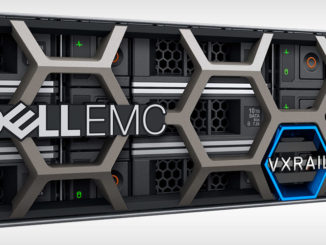
The public cloud for years has tempted enterprises with the promise of much-needed agility and scalability that come with an elastic IT environment and of cost savings from not having to invest a lot of money upfront to buy a lot of infrastructure, adopting instead more flexible consumption models that allow organizations to pay only for what they use.
Given all that, there was a perception early on that enterprises were likely to move most if not all of their operations to the public cloud, either to the big providers like Amazon Web Services (AWS), Microsoft Azure, Google Cloud, Oracle or IBM, or the thousands of second-tier cloud companies that have sprung up over the past few years.
However, in 2021, about 30 percent of workloads run in the cloud and while that will certainly increase in the coming years, enterprises are settling into the hybrid cloud model, with some applications and data making the move to the public cloud – and multiple public clouds at that – or staying on premises, either in traditional datacenters or in private clouds. According to Flexera’s annual State of the Cloud report earlier this year, about 92 percent of enterprises have a multicloud strategy and 80 percent a hybrid cloud initiative.
There are multiple reasons, including cost – moving data and applications between datacenters, the cloud and now the edge, as well as between clouds, can be expensive. But control is another key concern. Organizations are reluctant to cede all control over data – for privacy or security reasons or due to regulatory compliance and location reasons – to public cloud providers.
That said, they still want the agility, flexibility and scalability the cloud provides, even in their on-premises IT environments. It’s why AWS (with its Outposts effort), Microsoft (Azure Stack) and Google Cloud (Anthos) are creating programs that enable enterprises to bring slices of the public cloud into their enterprise environments and it is also why traditional OEMs like Dell, Hewlett Packard Enterprise, and Cisco Systems are putting more cloud-like capabilities into their offerings, including by making more of their portfolios available as a service and priced like the cloud with a utility model.
HPE in 2019 promised that by 2022, its entire portfolio will be offered as a service – complete with flexible consumption models – and took a big step this week with the introduction of storage-as-a-service on its GreenLake hybrid cloud platform, including new systems and a single console for managing everything.
Dell in October introduced Project Apex, its own as-a-service initiative. Core tenets of the effort revolve around making the acquisition and management of the IT environment simpler, enabling enterprises to determine the outcomes they want and having Dell package the infrastructure and services to meet those demands, and agility to scale and quickly deploy their projects. That said, they also want to keep control over their assets, including data.
“Too often, to achieve simple and agile, customers are faced with a false choice of having to hand the keys over the kingdom to a public cloud provider,” Sam Grocott, senior vice president of product market at Dell, said during a press briefing. “But with Apex, this is no longer required to achieve simplicity and agility. Apex provides the flexibility and control that public clouds simply cannot. This means organizations can take charge of their own cyber resiliency and the physical security of their IT infrastructure. Apex also enables data to be put precisely where it needs to be located to help simplify data privacy and to meet compliance obligations. By putting data in known locations, Apex can help avoid issues with data sovereignty and localization.”
The goal is to offer essentially all products – from servers and networking to PCs, hyperconverged infrastructure (HCI) and other offerings – as a service. Dell officially on Wednesday launched Apex at the first day of the company’s virtual Dell Technologies World event, leading the way with storage. Apex Data Storage Services can be deployed in the datacenter, at edge locations or at colocation facilities. (Dell also is announcing a partnership with global infrastructure provider Equinix to house Dell-managed infrastructure for enterprises.) Organizations can choose among three performance tiers of block and file – object storage is coming later – with capacity starting as low as 50TB.
The vendor also is unveiling Apex Cloud Services, which are integrated on-premises infrastructure offerings that support both legacy datacenter workloads and cloud-native applications, with enterprises can leverage by subscribing to either a private cloud or hybrid cloud offering, based on the level of control they want and the consistent operation between public and private clouds, according to Akanksha Mehrotra, vice president of product marketing or Apex, Dell Financial Services and Dell digital business units.
They also can choose among instance types like, depending on the workload characteristics. A virtual desktop infrastructure – demand for VDI has jumped during the COVID-19 pandemic with the sudden shift to a mostly remote workforce – may need an accelerator-heavy instance, Mehrotra said during the press briefing.
Dell’s new Apex Custom Solutions expands its as-a-service reach to its broad infrastructure portfolio, with Apex Flex on Demand including servers, storage, data protection and HCI – such as VxRail – and Apex Data Center Utility bringing in custom metering and managed services to the datacenter. The Apex Console gives enterprises a single place to manage their Apex lifecycle, including identifying, monitoring, managing and subscribing to services, offering predictive analytics, usage and spending reports and enabling them to change the services as they need.
Apex also is reaching into the edge, with an enhanced Streaming Data Platform with improved real-time edge analytics and a smaller footprint for space-constrained environments. In addition, Dell is working with solutions and services vendor PTC to develop an edge reference architecture for manufacturing organizations to generate more insights from such systems endpoints as workstations, PCs and mobile devices.
“We’ve built a capability that is cloud-native, that brings a cloud operation model,” Jeff Clarke, vice chairman and chief operating officer at Dell, said during a Q&A session with reporters and analysts during the event. “We’ve built a cloud control plane that allows us to work across our infrastructure. We have built those tools and capabilities with the very model that customers have received from the public cloud.”
All this comes at a time of rapid change at Dell. The company last month said it was spinning off VMware to drive growth opportunities at both companies and that also will bring Dell almost $10 billion, a big deal for a company still trying to pay down a massive debt from its $60 billion acquisition of EMC five years ago. Dell inherited VMware in the EMC deal, holding about 81 percent of VMware’s stock. The two companies have worked closely in recent years in such areas as hybrid cloud and both said the close cooperation would continue.
Then this week, Dell announced it was shedding another part of its software business, selling data integration specialist Boomi to private equity firms Francisco Partners and TPG for $4 billion. Boomi, which Dell bought in 2010 and now has about 15,000 customers, offers solutions designed to help enterprises better leverage data held in various systems, a key need at a time of distributed IT environments and the hybrid cloud.
The move not only can help Dell pay down more of its debt, but also clear the path for the company as it puts more of its focus on efforts like hybrid cloud, the edge and Apex. In a statement, Clarke said the deal will enable Dell to continue to “modernize our core infrastructure and PC businesses and [expand] in high-priority areas, including hybrid and private cloud, edge, telecom and Apex, all designed to help organizations thrive in the do-from-anywhere economy.”
During the Q&A session, Clarke stressed that almost everything connected with the cloud and edge is software-related – from the artificial intelligence and analytics to the management, integration and insights capabilities with products like CloudIQ – and that Dell will continue to invest in software development around its broadening hybrid cloud and edge efforts.
Founder and CEO Michael Dell also said that despite the expected spinoff of VMware, the two companies will continue to work closely together around hybrid cloud and the edge, noting that he will continue to be chairman of both companies and that part of the commercial agreement between the two calls for the close collaboration to continue for more than five years.
“This is a business model transformation,” Michael Dell said of Apex. “The opportunities are significant with multicloud and edge. We’re investing heavily in those. It’s an expansion as we see it of the opportunities because moving from products to services and managed services – which were already substantial businesses for us – leads to the next step, which is everything-as-a-service. It’s a whole new chapter for our company.”





The future is hybrid.
From on-prem you can see a Kubernetes solution that extends to the cloud.
HPE Ezmeral for example can orchestrate on-prem as well as work with native Cloud Kubernetes offerings. (e.g. AKS on Azure.)
This would allow for multi-cloud hybrid which has distinct advantages.
From the Public Cloud providers… you can see their concern.
Anthos from GCP is less about expanding into the Data Center but more about allowig that same single point of contact, capturing the key flows to be within GCP. The downside is their price. 6X more expensive on prem than in GCP. The idea is to allow for the transitions where the price reduction in the cloud as a way to get more of the workloads to run on Google.